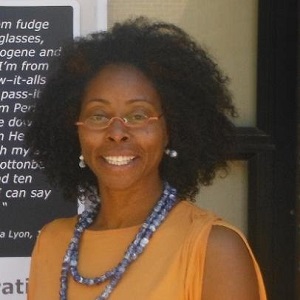
This blog is the second in a series following the Fall 2014 OYIF Convening. We interviewed Mildred Lewis, the Dean of Academic and Student Affairs in the Division of Community Leadership and Civic Engagement at Laney College, who shared with us her experiences from the Convening, and most importantly, how she is applying what she’s learned to her work in her community.
By Mildred Lewis, Dean of Academic and Student Affairs in the Division of Community Leadership and Civic Engagement at Laney College

Tell us about your work within the OYIF.
As the Dean of Academic and Student Affairs in the Division of Community Leadership and Civic Engagement at Laney College, I have the pleasure of serving on the OYIF steering committee with Urban Strategies Council, the backbone organization for the Oakland-Alameda County Opportunity Youth Initiative. As a participating committee member representing the community college since 2013, I have had the chance to discuss learning community pathways, matriculation processes, and partnerships that assist in determining the outcomes, indicators, and measures for OYIF projects as well as prioritizing pathways to college and employment.
The work I contribute as a steering committee member consists of providing portfolio knowledge to the college’s learning communities, financial aid, the Business Discipline, and the Welcome Center, while serving on the Institutional Effectiveness Committee and co-chairing the Basic Skills Committee.
What was one lesson, insight, or idea that resonated with you the most coming out of the OYIF Fall 2014 convening?
I was quite impressed to learn that Starbucks Co. has a program providing paid higher education opportunities in low-income communities to increase college education attainment for citizens who may not have had the opportunity to go to college. Their objectives – to increase the educational level, knowledge and skills of citizens – are also positive for the Starbucks brand. The anticipated achievement is multifold: individuals succeed, families succeed, communities succeed and business thrives!
What will you do differently (or are already doing differently) as a result of your time in Aspen? What are some of the other ways you will apply the learnings from the convening back home? Please be specific and give us anecdotes!
I was thrilled and excited to see that one of the workshops at the OYIF Convening was on narrative, titled Youth-Adult Partnerships: Tell a Story to Change Your Community. As a narrative scholar, I lead the Laney College Learning Communities Narrative Project to capture the power of students’ storied lives: their journeys to the community college and learning communities, as well as their dreams and career aspirations. Story is really all about how we make meaning and create our reality based on that meaning, and our ability to dream. Learning communities at Laney College truly create a sense of belonging and community; at the same time, they provide academic and student support, contributing to higher persistence, retention and completion rates for the students who participate in them. We are continuing to create learning community and student narratives for the 2014-2015 academic year. Story is a powerful tool, especially coming from our students who convey the power of education, self-knowledge and liberation.
The Academy for College Excellence (ACE) presentation by Diego Navarro was also a highlight. The student affairs division at the College is interested in engaging ACE so that our units receive professional development to more effectively engage students’ affective domain, with an eye towards increasing completion rates among our students.
Were there any insights from the Convening that were specifically valuable to your work with the student body at Laney College? Are there any subpopulations of your students (e.g. foster youth) that you will work with differently based on what you have learned?
There were many takeaways for me by participating in the convening. The Starbucks community partnership initiative was significant. I realized that a traditional college education does not necessarily prepare citizens for the workforce, and being able to see alternatives preparing citizens for the workforce through Year Up was inspiring.
We continue to refine the foster youth program from semester to semester. With better academic scheduling, program development, and community partnership we can produce greater levels of student achievement and identify early career and higher education pathways.
After attending the Youth-Adult Partnerships workshop I learned that young adults prefer stories of professionals who work at the organizations and programs they participate in. The Opportunity Youth demonstrate the dynamic nature of opportunity, organizations and success. Everyone has a story…what is yours?
What is your vision for the future of the work around connecting opportunity youth onto pathways to and through postsecondary education?
bell hooks states that education is the practice of freedom, and Myles Horton shares that we make the road by walking it. Through CBO, social service, probation, career and education pathways, I have a vision that liberatory pedagogy would create a universal space for students to be self-reflective through some form of narrative, whether it be visual, performing, spoken word, expository, and so forth, so that students achieve a greater sense of their identity. The ability to dream, create, effectively communicate, critically think, collaborate within affinity groups and ultimately succeed in an ever-changing global society depends greatly on how our opportunity youth identify. Self-development is and should always be a significant domain of work activities assisting our students in their journeys towards success.
As a community college dean, I also have a vision that this important work effecting 6.7 million youth will continue to result in effective program design and implementation strategies that are both flexible and creative to meet the changing needs of business, community and the youth we serve; I also hope to see greater investment and collaboration between agencies, education institutions, government and business. I have a vision that greater numbers of youth will succeed in their career and education choices, and that individuals can succeed as well as local communities, states and our nation!